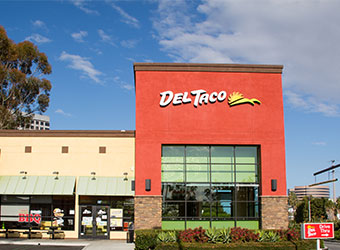As your business shifts from no or low capacity to full capacity, it's time to review your hiring practices.
The COVID-19 pandemic had an enormous impact on nearly all areas of business, including your staffing. But now, capacity restrictions are beginning to ease.
While this is certainly good news for facilities, this new phase comes with its own challenges. Your next phase of re-opening? Staffing your facilities to meet new demand from your customers, in the middle of a hiring shortage.
If you are ready to ramp up your hiring for the upcoming season, it's worth examining your employment process. Here are eight hiring tips to start with as you prepare for full capacity.
1. Target your jobs postings
The vast majority of job candidates are now starting their job search online. While a digital job board means you may be able to reach a wider audience than before, this wide net can also be a challenge.
If your positions are in a niche area, like hospitality or retail, consider using industry trade publications, university job boards, or certain social channels to post your listings. You are actively recruiting candidates, so post your jobs to reach the best applicants where they are.
If you use large job sites, consider leveraging geo-targeting for your posts to get your listing in front of workers who live in your area. Local applicants may already be familiar with your business, or at the very least, a long commute won't be a discouraging factor.
2. Write descriptive job roles
Almost every single industry seems to be hiring right now. Why should someone choose to apply for your company?
Many facilities jobs can look similar on paper. The responsibilities may overlap significantly between similar positions at different companies. With this in mind, don't open a job description with just the bulleted list of responsibilities.
Instead, capture a candidate's attention by highlighting the strengths of your company. Talk about the culture and mission. Leverage current team member testimonials or descriptions. Make it clear to a potential applicant why they would love to work with your company before you go into the details of the role.
Next, although you want to be creative in describing your business, make sure to still optimize your posting for what candidates are searching for. While "mixologist" may sound exciting to you, the perfect candidate may be searching the common word, "bartender". Use the most common and simple job title for an open position.
Finally, make sure that you include a salary or wage range for your postings. It's a competitive hiring field right now, so being upfront can be an advantage. Avoid general phrases like "plus tips" or "signing bonus." When candidates know that your wages will cover their cost of living, they will be more likely to apply.
3. Look for ambition, not just experience
In today's hiring shortage, you may not be able to find candidates with every single skill that you need for the role. However, ambitious applicants can usually learn the skill sets required. When interviewing for a role, look beyond an applicant's on-paper job experience to see their potential. While this will require investing in employee training, it is also an opportunity to teach an employee the exact skills they need for your company.
In addition, if you have found a candidate who is a good fit for a role, don't wait to make the job offer. Most job applicants are applying to multiple places at once, and in today's labor crunch, they may receive other job offers quickly. If you find someone who is a good fit, consider making the job offer as soon as possible—potentially on the spot, or within 24 hours.
4. Feature a professional career page
Potential candidates aren't just looking for a job; they are looking for a career. Let them know that they've found the right place. Communicate that working with your company isn't just an hourly opportunity, but an opportunity for career advancement.
Showcase this career path prominently on your website with a "careers" page. Make this commitment obvious by naming the page Careers, not Hiring or Jobs.
Use the page to show potential applicants how you invest in employees and encourage retention, as well as what job perks and benefits you offer. It's also an opportunity to demonstrate what your team culture looks like and how you celebrate current employees.
5. Prioritize assessments and pre-screen questions
If you are ramping up your hiring for the foreseeable future, an Applicant Tracking System (ATS) can help streamline the process and keep it easy for both your hiring managers and applicants. Many managers know the struggle of scheduling multiple interviews and discover that most people don't show up.
Using assessments and pre-screen questions through your ATS can help ensure that only the most committed applicants are moved through to the interview round. With these questionnaires, you can not only assess the skill levels of applicants, but you can also see who is more likely to follow through. When applicants take the effort to go through these extra steps, you know they are much more likely to show up and engage in your in-person interviews.
For the applicant, these assessments and pre-screen questions can serve to become invested in the role and see that a facility is taking the hiring process seriously.
6. Champion diversity and inclusion
Diverse, inclusive teams are talented teams. Work toward your diversity and inclusion goals by using what resources you have, like your applicant tracking system.
If your ATS meets diversity and inclusion standards, it can help your management create a repeatable, thorough evaluation process. Interviewers can use the ATS to rate candidates based on the same consistent framework. With these metrics in hand, your managers can compare applicants on equal terms during the hiring process.
7. Focus on retention
If your business demand is growing again, it's inevitable that you will need to do more hiring. However, in the rush to hire new employees, make sure that you don't forget to prioritize retention of existing staff as well.
All employers know that high turnover is costly. When you need to fill an open position, you must recruit, hire, onboard, train, and go through a period of employee development. If you cannot fill the open position right away, you also have the cost of operating your facility with an unfilled team role, which can be difficult for your existing staff and affect customer service.
To avoid this cost as much as possible, examine your retention track record. Traditionally, retention tactics commonly center around increased pay, adding benefits, and career advancement opportunities. While these should still be a focus, you may want to go even further.
The past year has been difficult for workers and companies alike. Consider examining your company's accountability, flexibility, and investment in employees, and how these policies may impact retention.
Your company culture affects retention, for both your current employees and any future ones. The goal? To have your current staff telling their friends and family what a great place your company is to work.
8. Consider implementing a referral bonus
Finally, alongside retention, consider using your current staff as recruiters to help you find new applicants. Current employees can be an asset to help you attract quality applicants. A referral program can get everyone involved in the recruiting process.
Before implementing the program, make sure to communicate to employees why you are working with them for referrals: because you want more employees like them. If your staff feels invested, they will likely be more helpful in your referral search.
Of course, your referral program should also include a referral bonus as incentive. Make the bonus large enough to matter (something no less than $250) and pay it quickly (no less than 90 days). Making the bonus meaningful and timely can help your staff understand the beneficial impact of a great referral.
Conclusion
As business ramps up to full capacity, it's more important than ever to invest in quality recruitment and retention. With these tips in mind, you can be better prepared to meet the challenges of full staffing once again.
Restaurant365 incorporates restaurant accounting software, restaurant operations software, inventory management software, payroll + HR software, and scheduling software into a cloud-based platform. R365 HIRE makes it easy for you to filter, hire and onboard the optimal employees for your business.



